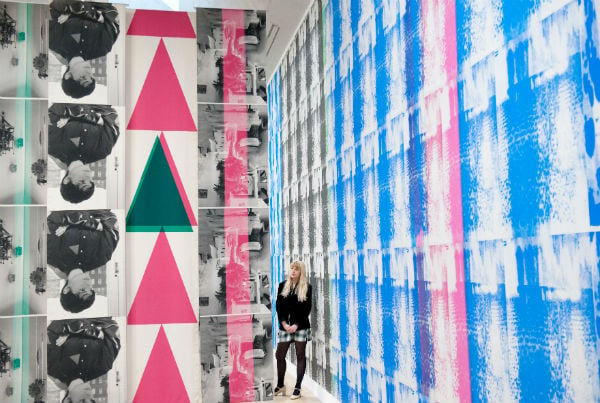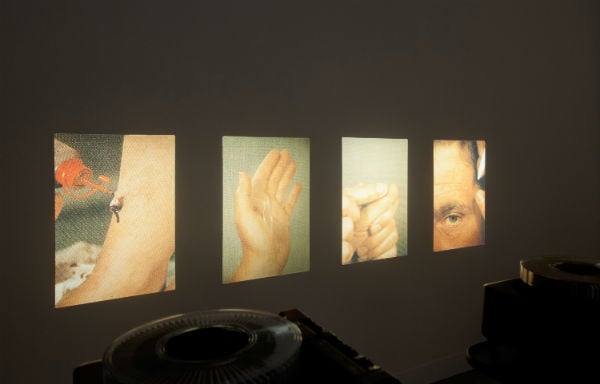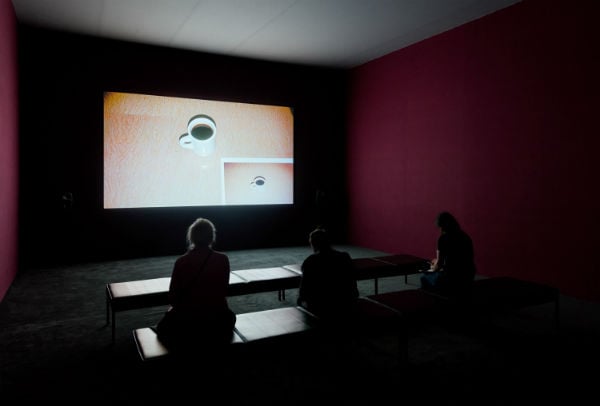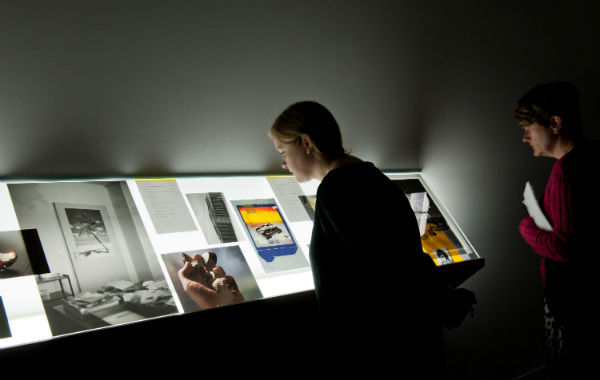Art & Exhibitions
Is the Turner Prize Just a Publicity Machine? JJ Charlesworth Takes on the Tate
Insider, cliquey process isn't quite working.

Insider, cliquey process isn't quite working.

JJ Charlesworth

This year’s Turner Prize shortlisted artists are hooked on materiality. Not some slick, seamless production-value fetishism geared for maximum visible impact, but almost the exact opposite—a thoughtful, often overly self-conscious, politically inflected take on materials and media, on production and reproduction, in which the frictionless transparency of images is jammed by the clunky inertia of obdurate old tech. The kind of old tech that slows things down and makes you mindful that you’re not just looking at all of this in a JPEG on Tumblr while sitting on your couch in your underpants.
The four shortlisted artists—Duncan Campbell, Ciara Phillips, Tris Vonna-Michell and James Richards—are thirtysomething artists who reach reflexively for antique media—16-millimeter film projection (Campbell, though he’s 42), screenprinting (Phillips), and, perhaps the mascot of media obsolescence—the Kodak slide carousel (in Vonna-Michell and Richards). Art can’t escape the culture of reproduction, they seem to say, but it can work through its systems to give us new perspectives on the technology that makes our culture work.
The most up-to-date, post-Internet work here is Richards’s digital video Rosebud (2013), a black-and-white image-poem of close-up and intimate shots—the camera bursting through the surface of a pond, the texture of skin, pubic hair, the shaft of a penis and an anus (caressed by a stem of some wild flower, before it gets ticklish and contracts)—are contrasted with close-ups of pages of a book of sexually explicit photography, most notably of Robert Mapplethorpe’s more pornographic images. The book, found in a Tokyo library, has been censored, the offending genitals scuffed out. Nearby, a multichannel slide projection reproduces what might be old instructional images for the application of fake or theatrical wounds—bloody gashes, a broken fingernail. Richards’s take on sensuality, fleshy reality, and its translation into images has its moments, but it carries familiar digital-era anxieties about bodily presence and subjective experience.

Turner Prize installation view, James Richards, The Screens (2013).
Copyright the artist, courtesy Tate Photography.
A fascination with the instability of personal identity courses through Tris Vonna-Michell’s energized audio monologues, set to video and slide projection sequences. Vonna-Michell’s work is at the outset performance art—the artist has blazed a trail with performances that mesh biographical and historical narratives in speeding, babbling cascades of language and gesture. Here, we make do without the artist’s presence, listening to him on surround speakers. Vonna-Michell is a sort of wandering story hunter, forever linking the unconnected by putting himself at the center of his narrative tangles. Addendum I (Finding Chopin: Dans l’Essex) (2014) traces his tracking down of the concrete poet Henri Chopin not long before his death in 2008 in England, against a swiftly changing sequence of associated images—the landscape of Norfolk (where Chopin returned to live), the quail eggs Vonna-Michell’s dad tells him to take as a present to the aging avant-gardist. Another piece, Postscript IV (Berlin) (2014), which is slower and set to slides, recounts his attempts to retrace his mother’s childhood history in the Berlin of the early postwar. Erasure and loss motor Vonna-Michell’s obsessive recomposing of the past, but one wonders if he will ever reach beyond himself—it feels like the artist has been doing this same act for a long time, for better or worse.
Ciara Phillips’s single, room-filling installation Things Shared (2014) assembles new and reworked older works, an orchestrated cacophony of brightly colored screenprinted banners and wallpaper, dominated by a large walk-in curved structure (an ‘O’ in section) and a sort of giant K-shaped glass-topped display table, filled with posters and publications, while on a far wall two large framed screenprints figure a cheery ‘OK.’ Philips’s work brings out an ethic of work and collaboration to the language of reprographics and typography. Things Shared is full of the evidence of earlier collective projects with a group of like-minded artists, community groups and activists, and the installation has a winning openness and generosity, but the echoes of William Morris, of Russian Constructivism, of the Bauhaus, of the poster workshops of Paris during May ’68, and other politically minded graphic projects of the last century weighs the space, and weighs on Phillips’s wider practice, with a nostalgia for past radicalism that its formal exuberance can’t quite shake off.

Turner Prize installation view, Duncan Campbell, It for Others (2013).
Copyright the artist, courtesy Tate Photography.
The politics of the past and of the present are a constant background for these artists, but Duncan Campbell, brings politics very much to the fore. His 50-minute video It for Others (2013) is an exhaustive, left wing retort to the recent fashion for art that obsesses over the world of commodities and the fantastical imaginary of consumer society. Really a set of short visual essays tied together as numbered chapters, It for Others is a sprawling assemblage of reflections on Marx’s Capital (as performed by dancers), commodity art and art references (shots of Campbell’s Soup tins cooked and served), via a commentary of Alain Resnais’s and Chris Marker’s anticolonialist 1953 film-essay Les Statues meurent aussi (Statues also Die), all processed through a Godardian mistrust of images, the film continually commenting on itself. Campbell’s range is outrageously ambitious, confrontationally seeking to frustrate and upset lazy viewers and apolitical critics. If nothing else, it’s demanding of your time and thought, and takes big risks with its audience’s tolerance, which is a rare thing at Turner Prizes.
The Turner Prize is 30 years old this year, and there will be the usual complaints that it has grown tired, or increasingly irrelevant, or that it is little more than a publicity machine for the Tate. In truth, it’s maybe time to point out that the biggest problem with the prize is that it risks becoming a myopically professional affair, so comfortably run by art world insiders that there is little risk either of real controversy or too much widespread public interest. It isn’t necessarily the caliber of the shortlisted artists that is an issue, but their sameness (even down to two of the artists being represented by the same gallery), which prompts suspicions that the prize isn’t looking far enough, or hard enough.
Campbell deserves to win, for the sheer scale of his critical interests and the restless reinvention of his formal and narrative resources. But it would have been great to see an artist like him faced with artists of equal scope but on entirely other trajectories, rather than this narrow serving of middle-range curatorial currencies. It isn’t the artists’ fault, of course; it’s a product of the process itself, which suggests that there needs to be some serious self-scrutiny about the risk of cliquishness when it comes to the tastes and affiliations of the selection panel. If the Turner Prize is starting to feel more parochial than national, it’s because its stated ambition—recognizing an outstanding exhibition by a living artist from Britain—isn’t being taken seriously enough.

Turner Prize installation view, Tris Vonna-Michell, Addendum I (Finding Chopin: Dans l’Essex) (2014).
Copyright the artist, courtesy Tate Photography.
JJ Charlesworth is a freelance critic and associate editor at ArtReview magazine. Follow @jjcharlesworth on Twitter.